Fogg, 1992
Fogg, 1992
Fogg, 1992
- No tags were found...
Create successful ePaper yourself
Turn your PDF publications into a flip-book with our unique Google optimized e-Paper software.
Figure 6, ftom Ref. [ 14], shows the results of such an investigalion.For s lars bcr\reeo 0.6 - I . I M", | 000 ruDs for eacb integerCr belweeo I G).r and TK wde per{omed and fte tolalnumber of BPs of each tpe plotted.The results for 0.9 and 1 ,0 Mo are simple to accoutrt for. Therelative abundances of Juvenile Martian, Juveoile Terran a_ndlfubilable BPs reflect the differilrg widtls of their rcspectivezorcs withiD the ecosphere (fig. 2). The decline in n(P) with ageis caused by the decline in planetary tectonic activity with time ,as modelled by Equation (14). The fall offis particularly ste€pafter T = 6 Gyr as few terrestrial planets fomed about suchreladvely metal poor star:s are massive enough to sustain cnrstalrccyclitrg to the plesent clay.The grapb for 1.1 Mc shows Oal, for stars of > Mo, tbedecliDe into plaoerar) senesceDce will. io maoy cases, behrelevant as such a situation would be preempted by theprimary star evolviDg off the main sequeoce. In this case,several hundred BPs still survive at 7 cyr which is Tm for a l 1M; star. This has the effect of increashg the ftequency ofbiocomDatibie planefs about M/S strrs of 1.05 , 1.35 M.because sucb a slar is more likely to be younger ban a r)?icatstar of < 1\4o. However, the peals offigs. 5a and 5b are displacedfrom each other by 0.314 because stars of> Mo are much morescarce. Not only is this because of the influerce of the initialmass spectsum, fewer of these sta$ will have been bom in thefirst place, but also because rnany of thenr" beiDg older thanT6, wili have vanished. The present day mass spect um ofstars> Mo thus falls off with an exponent that is the sum of those inEquations (3) and (6), -(1 + 3.75). With jncrEasilg srellar mrssTs is reduced unril al l.8MeitisoolyjuslabovelC),r.Thise{plain\ wh} oo BPs a-re found about more masstve slarsbecause of rhe assumptior of a 1 Gyr minimum age for abiocompatible planetTbe graph for 0.8 M6 stars illustrates the influe&€ ofanothercoDstanrt on biommpatible planet abundrnces. Habiiable planetsare now raje ard only occur in young systems ofT < 3 Gyr. Thisis because the luminosity of a 0.8 M" star is tow enough suchlhat the wamer rcgions ofthe ecosphere af,e situated so close tothe prinury that any plalet there is subjected to excessivestellar tidal forces which mpidly despin its rctation to a synctuonousstate. Since stellarlumioosity is such a strong firnctionof stellar mass (Lo Mlrr) alrd tidal forces so crucially dependenton distance (Udes Cl' R.M), the tidal force o! a planet vdthinthe ecosphere of a given star is roughly proportional io M{. Thedata for strrs of0.7 Mo reveals that a drop ofa mere 0.1 Mo nrlesout the existeoce of habitable plalets aod all but the veryyoungestjuvedle teran planet. However, planets of the juvenileMarlian type rcrnain sufficientty distant ftom ttre pdmarylo be unaffected by tides ovet the timescale considered. Afiuther reduction to 0.6 Mo shows that even the abundances ofJM biocompatible planets are being reduced by the effec$ ofstellar tides. At 0.45 M6 it was found that no biocompatibteplanets were possible at all.6.'I'HEQUESTIONOFMULTIPLESTARSYSTEMSThb analysis was dore on the assumption thatonly single st rshave planets. This is valid if planets caDnot form in binary ormultipl€ star systems [24]. However, the validi9 ofthis conjectureis difficult to assess i! view ofthe conthuing uocertaintyassociated wi$ the planet ry fomation proc€ss [25]. planetaryorbits can be dFamica.Uy stable about biDary shrs, eithercircling each compooeDt, or both compooents of a very closepair. Harington 126l has estimated ftom three-body problemnumerical integrations that tle limitation for stability is that theratio of the periastron distance of tie outer tertiary componentT ABLE 3. S nnary of Sinulatiotl Results.IIPS may exist about stfis bef,yeen 0.8 - 1.8 I\4,BPs may exist about st rs between 0.5 - 1.8 Mo,HPs may occur about ) 37" of stars beween 0.85 - 1.45 Iq.BPs may occur about > 30qo of stars between 0.8 - 125 Mo.Case l: OnIy Single Stars Possess Planets.Frequeoc) ofHabilable PLanets I HP/ 41J srui_:.Meatr distalc€ between Itubitable Planets - 31 LY.Frequency of Biocompatible Planets I BP / 39 stars.Mean distance betweeD Biocompatible Planets - 14 LY.Cose 2: PLapts Can Form in MuhiDle Star Svstens.Frequency of Habitable Planetr 1 HP / 196 stats.Mean distance between Ilabitable Plarcts - 24 LY.Fr€quency of Biocompatible Planets 1 BP/ 18 stars.Mean distatrce between Biocompatible Planets - I I LY.7. THE SOLAR NEIGEBOI,'RHOODto the semi-major axis ofthe close compoDentbe somewhere inthe rulge 3-4, regardless of which is the pla{et It so happetrsthat nearly all the multiple star systeos in the solar neighbourhoodwiII thus have highly stable planetary o$its within theecospherc of each component an4 so long as bottr stars arewithiD 0.5 - 1.8 Mo and still on ttre main sequeoce, therc is achance of the edstence of biocompatible platrets, It was assumedfu Dole's study [2] that habitible planet orbitl would bestable in 959, ofmuttiple sur systems.To convert tie data produced by the simulation to thescenado where planets also form in multiple star systems onemultiplies the frequencies n(HP)/N aad lr(BP)N by 0.95 x thercciprocal of one minus the relative biDary frequency, i.e. by2.11. This gives the result that about 1 in 197 stars may possessa habitable planet and I itr 18 stss abiocompatible planeE thesewo ds havitrg a! avemge spacial sepaiation of24 ad 1l LYrespectively.A sunmary of the conclusions rcgarding ablndances ofbiocompatible planets is shown in Table 3.CombiDiog data on nearby stars with tte rcsilts of tie modelpemits the identification of stars which may possess biocompatibleplanet! and which are calrdidates in the se?rch for extraten€strial1iG. Qualifying sta$ wilhio 22 LY ftom the Sun aretisted in Table 4 along with their spectral tlpes aod esfimatedmasses. Paramelers a€ taken from [r] or, when not hcludeiin tXis refeEnce ftom [21. The probability of &e existence of ababitable planetPp = o(HP)/N(M) aDd a biocompatible planetPtrF - n(BP)fN(M) arr also tabulated with an asterisk deDoLingthat the value listed only applies on the assumption that planetsexist withitr E ltiple star systems.Table 4 shows that there are numqous potentially biocompatiblelocatioos wittrin fie solar neighbourhood. The stars €Eridani, € Indi, r Ceti, o Draconis, 6 Pavonis, 82 Eridad, B


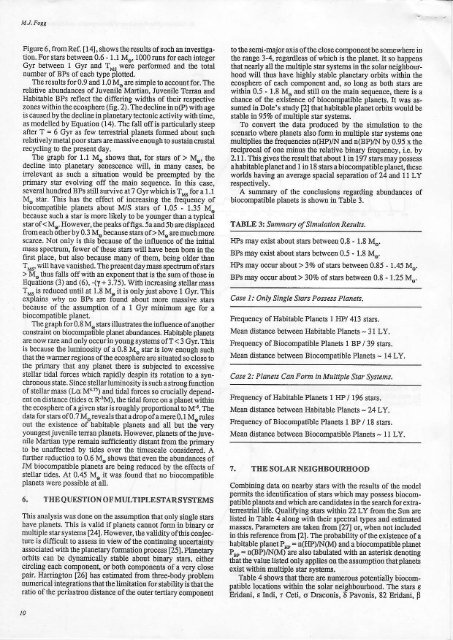
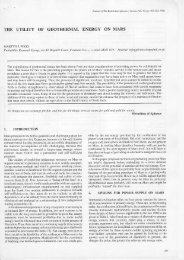
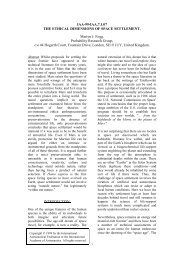
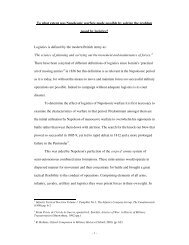

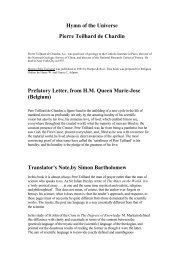
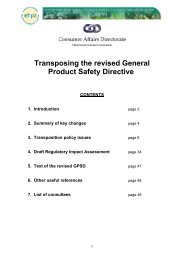
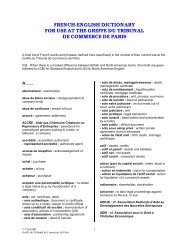
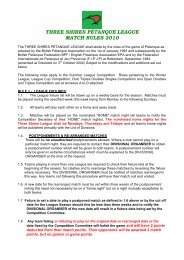
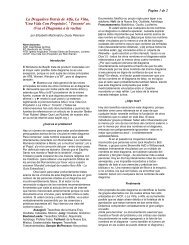

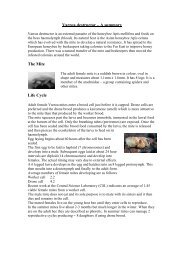

![Tibetan Herbal Medicine Core Curriculum [PDF]](https://img.yumpu.com/32594566/1/184x260/tibetan-herbal-medicine-core-curriculum-pdf.jpg?quality=85)
